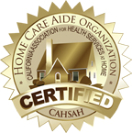As the geriatric population in the United States continues to rise, so does the incidence of polypharmacy, defined as the “the excessive or unnecessary use of medication.” The average older adult uses nearly five prescription medications and two nonprescription medications. Individuals 65 years and older make up >13% of the population, but they consume ~30% of all prescription medications. Laxatives, analgesics, cardiovascular medications, vitamins and supplements, and psychoactive medications are among the more commonly used. A senior may be at risk if he or she: takes five or more prescription medications; sometimes borrows medications; uses over-the-counter medications including vitamins, dietary supplements, or herbal preparations; requests refills without seeing his or her health care provider; takes prescription medications from more than one health care provider; and has prescriptions filled at more than one pharmacy.
Aging affects drug sensitivity; the physiologic changes that occur with aging affect what the body does to a drug, and what a drug does to the body. Research shows that the body’s ability to absorb, transport, and eliminate medications declines with age because of impaired circulation, changes in vessel walls, and a decrease in the number and efficiency of the glomeruli (tiny tufts of capillaries which carry blood within the kidneys). Metabolism of medications is also decreased as a result of the decreased blood flow in the liver, fewer functioning liver cells, and a decrease in the liver enzymes that break down and transform medications. These changes result in many medications remaining in the body longer than in a younger person.
If you are a senior, here are some medication practices that I recommend. Review all your medications including over-the-counter medications. Talk to your health care provider about risks, benefits, side effects and special precautions of each medication prior to use. Keep track of when each was prescribed and how it affects you. Your doctor can eliminate duplicate medications–those prescribed by different health care providers for the same problem or illness. Use a daily or weekly schedule of medications using a method or tool (chart or pill box) that fosters safe, independent administration. Label or color code medication bottles to reduce the chance of medication error. Many medication dosages are calculated by body weight so keep an accurate record of your weight.
Contact your health care provider or pharmacist before you take any herb, supplement, or over-the-counter product; he or she can review the complete drug profile. Alternatives commonly used include ginseng, ginkgo biloba, garlic, and St. John’s wort. Certain combinations with anticoagulant agents or digoxin can alter their effectiveness or produce serious side effects. Beware of the possibility of medication interactions and signs and symptoms of toxicities, which can easily be misinterpreted as “signs of old age.” These include disorientation, fatigue, anorexia, falls, and vertigo. And try to get all your medications using one pharmacy; this will help the pharmacist check for dangerous or potential drug-drug interactions.
Drug safety at home can be achieved by following these simple steps: keep drugs in original, labeled container; dispose of outdated medications in a sink or toilet only; never dispose of them in the trash within reach of children; never “share” drugs with friends or family members; always finish a prescribed medication, do not save it for a future illness; and read labels carefully and follow all instructions. If you have difficulty opening child-proof containers, request for non-childproof containers.
Medications can be a powerful tool for improving the health of older adults and their quality of life. But in order to ensure safe and effective drug therapy, the elderly need to carefully monitor what they take and be alert for signs of trouble.







